We often believe that plants only need sunlight to live and grow. Sunlight is necessary for the growth of plants, but some plants can equally grow in shades. According to research, some plants that tend to grow very well in the shade grow the lowest in sunlight.
Plants that Can Grow in Shades
Below are plants that can thrive well in a shaded area in your garden.
1. Hostas

Hostas is a perennial plant with a big beautiful canopy of foliage that grows on rich, loamy earth. Planting them here will prevent you from applying fertilizer to your hostas every month to compensate for the poor soil.
This plant grows well in cold parts of the country. With extensive roots and broad leaves, they are one of the favorite food of deer. Therefore it is a good garden plant if you have pet deer. They are hardy in zone 3-9. There are several varieties of Hostas, such as Autumn frost, which has frosty blue, gold edge leaves. Empress wu – grows up to 3-4 ft tall and 5-6 ft wide.
2. Ligularia
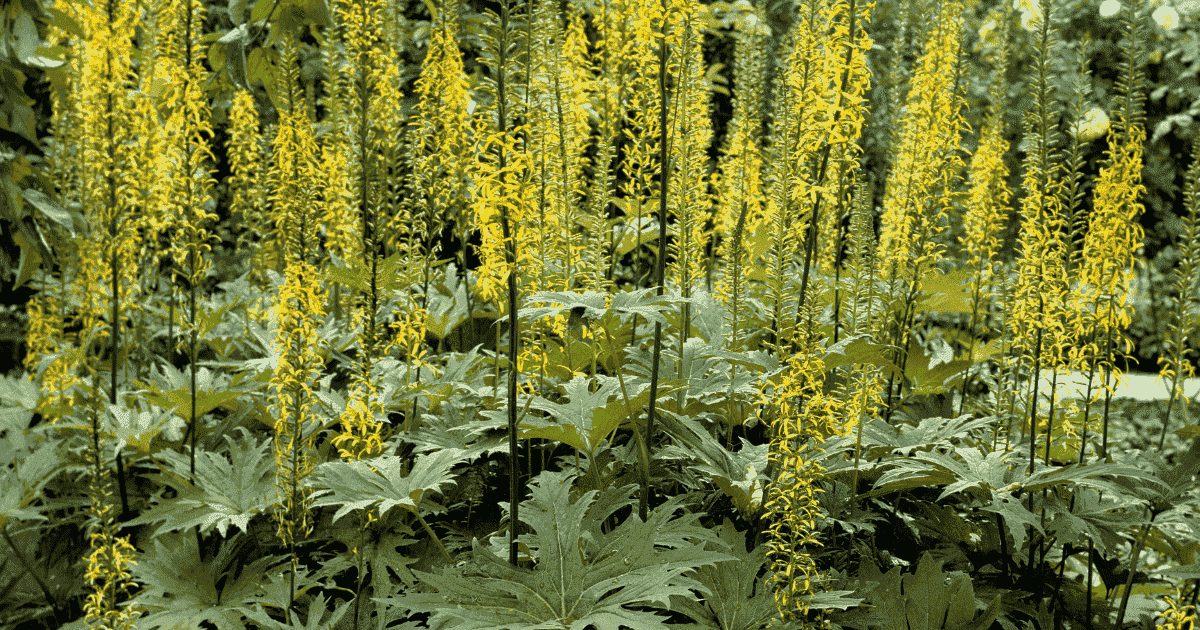
Ligularia has a bold texture and great flowers for a partial shade condition. It is an ornamental with toothed leaves. Some ligularia have deep green leave (bottle rocket) that produces sparkling yellow flower spikes in midsummer, and others have deep purple (Britt-Marie Crawford) with golden orange, daisy-shaped flowers in late summer
Ligularia grows well at the edge of ponds and streams with rich, moist soil. It grows very well in a consistently moist and shady environment. It is found in zone 4-9
3. Foam flowers (Tiarella)

This evergreen perennial excels as ornamental foliage all year round. It has a bright color in spring and winter and fall but mellows in the summer.
Foam Flowers also have a soft fragrance, mainly pink or white, and bottlebrush-shaped flowers. Its pattern complements another shade plant like a fern.
Examples of foam flowers are cutting-edge plants that have finely cut green leaves with dark purplish-red to blackish-red color center, and bottlebrush-shape flowers
4. Coral Bell (Heuchera)
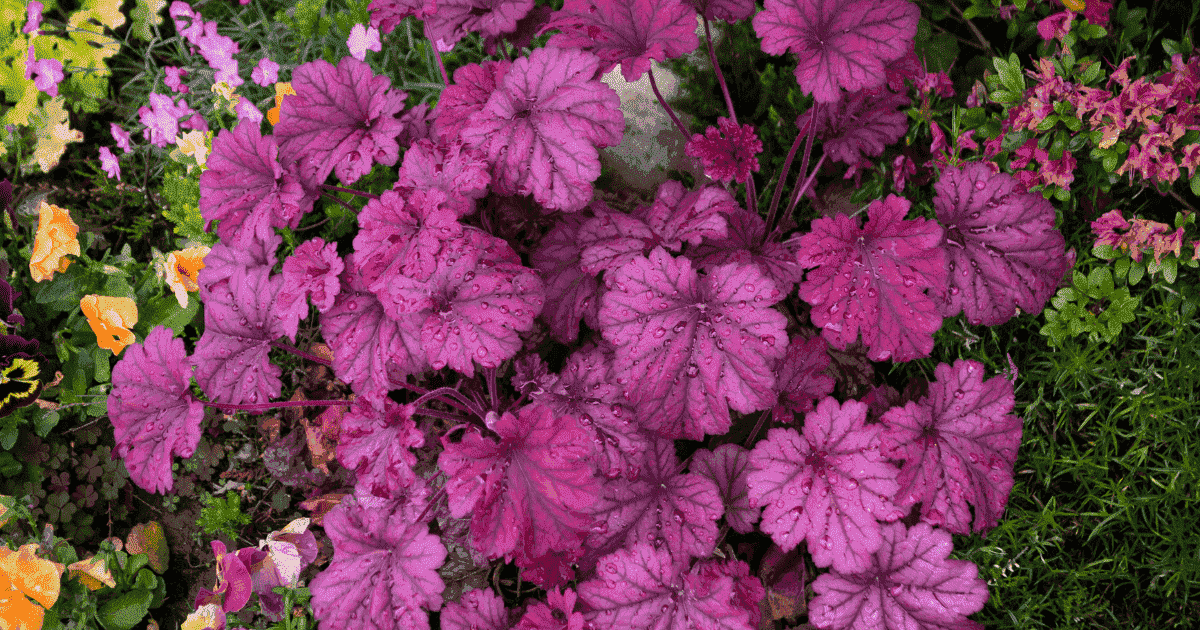
This plant can grow both in complete shade and in full light. Coral Bell prefers partial shade and moisture. However, if planted in full sunlight, it has to be watered. Corelle bell does not grow well in clay soil or wet soil, especially in winter. The best Corelle Bell to plant in your climate depends on the texture of the leaves.
The thinner, shinier leaves grow well in a country with low humidity levels that are relatively cool and dry. Whereas those varieties with larger fuzzier leaves grow well in a country with high humidity, relatively warm and sticky countries
5. Foamy Bells (Heucherella)
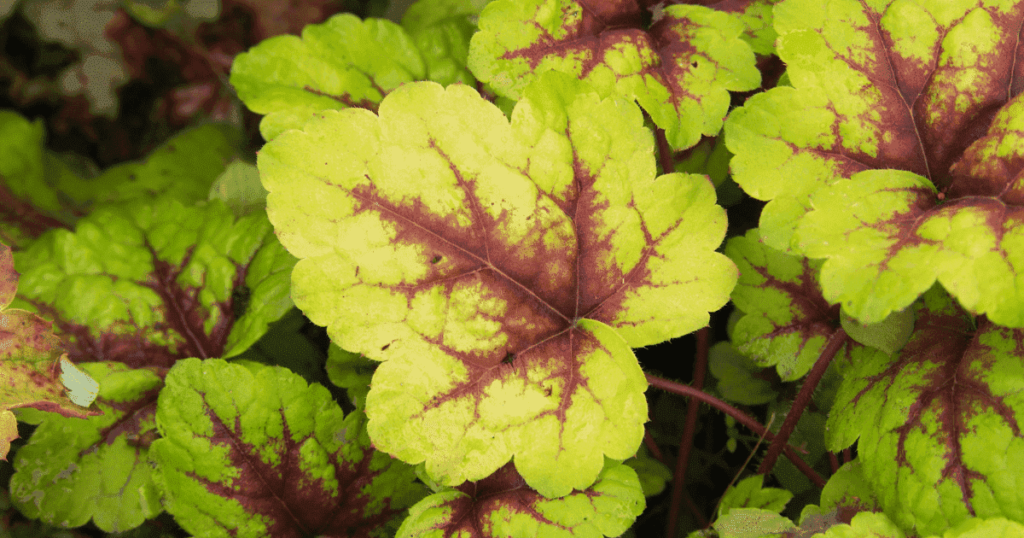
It was made from the cross-pollination of foam flowers and Corelle Bell to have this interspecific genus. It grows well in shades since its parents grow well in these areas. The cultivation of foamy bell follows strictly that of Corelle Bell or Foam Flowers. This plant grows well in zone 4-9.
Various cultivars of the foamy bell, such as yellow, red, and green cultivars, are now available with a striking color at the center of each leaf and a bubble gum pink color. Therefore, It is a high-decoration foliage plant, adding color to your garden shade.
6. Solomon’s Seal

Solomon’s seal, also called Polygonatum x hybridum, is a plant mostly found in the garden, and it bears plenty of seeds with double oval leaves and dangling green, white bell-shaped flowers. It sprouts in the late spring to early summer.
It is mainly seen in woodlands and partially shaded areas. Corydalis and bleeding heart are a perfect match when cultivating these plants. Its complement is ferns and cone-shaped flowers.
7. Sow bead

Sow beads, also known as cyclamen, bloom from winter to spring. It is mainly found at the base of small trees and neutralizes in the grass. The perennial plant has hard silva-lined deep green leaves. The flower blooms in shades of white and pink. It has been awarded Garden Merit (AGM) from the Royal Horticultural Society. Sow beads are mostly found around shrubs and trees
8. Himalayan Blue Poppy
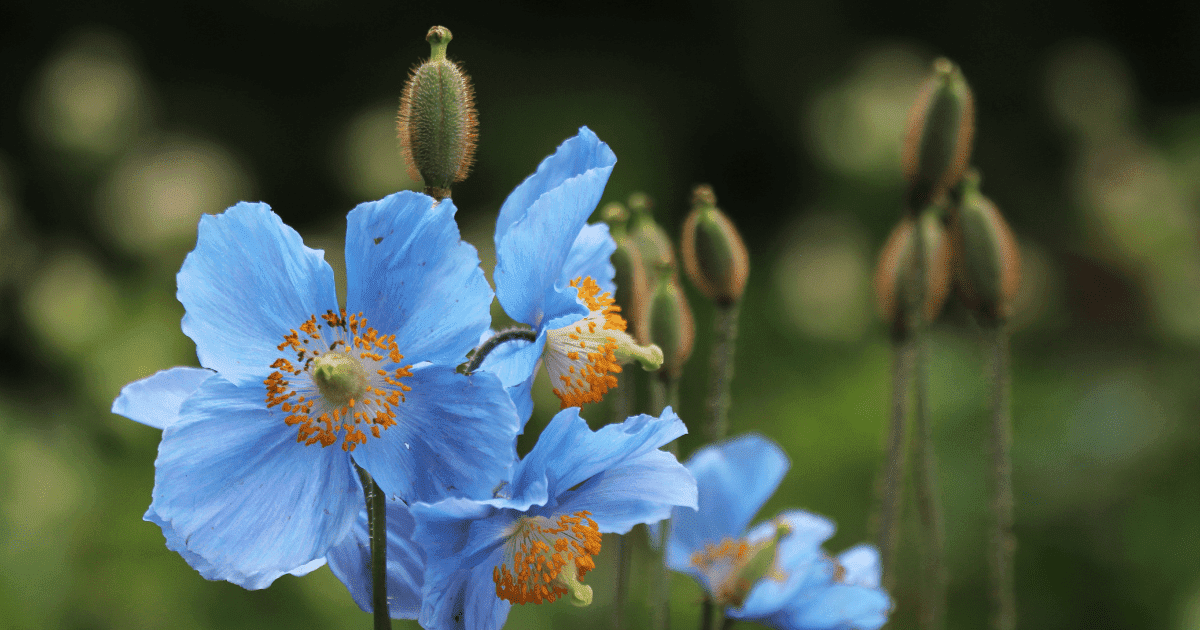
Himalayan Blue Poppy, also known as Meconopsis Baileyi, sprouts in a shaded area in late spring to early summer. It has a bowl-shaped blue flower, and its center has a striking yellowish-blue radiant. Also, it grows on a large scale in moist areas; it does not grow well in clay or alkaline soil and is neutral to acidic soil in a shaded spot.
9. False Goat’s Beard
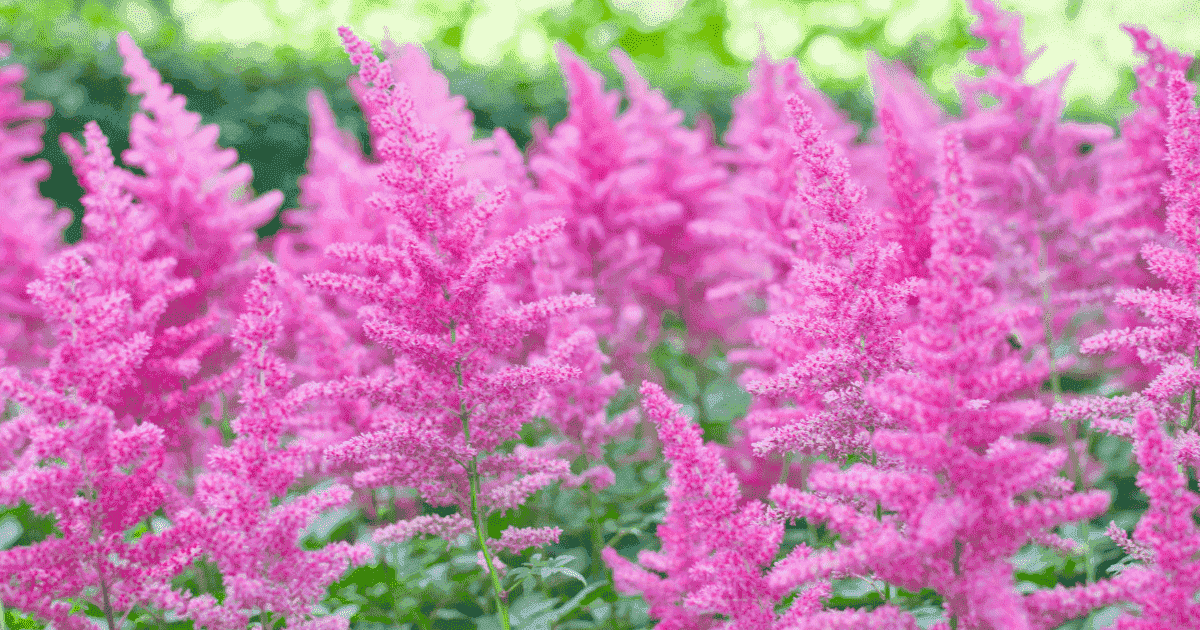
False goat beard, also called Astilbe, blooms from early summer to midsummer. It bears plumes of catchy beard-like flowers. It is the best choice for a dark corner. The blooms will brighten these corners and add more color to your garden. Varieties of Astilbe are unique lilac milk and honey. False Goat Beard blooms can grow in shady corners.
10. Ivy
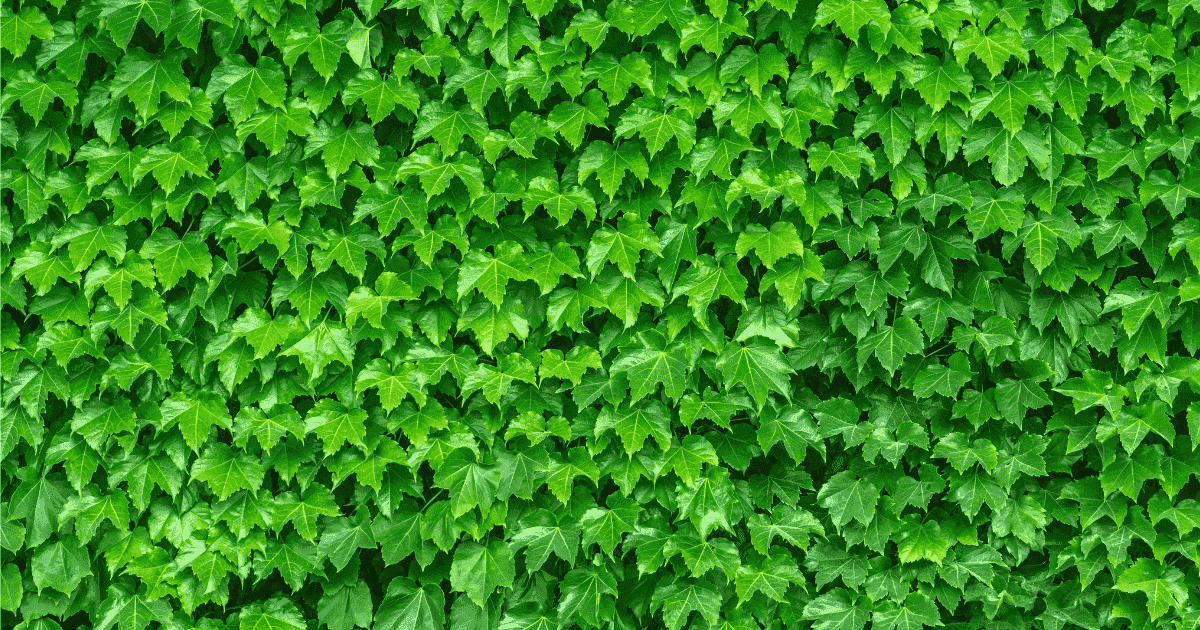
Ivy, also known as Hedera helix or English ivy, grows well in the shade. It is ideal for pergola poles, a good climber covering the low wall and spreading en masse. It is an evergreen shade-loving climber, and it is best for creating leafy drops.
11. Masterwort
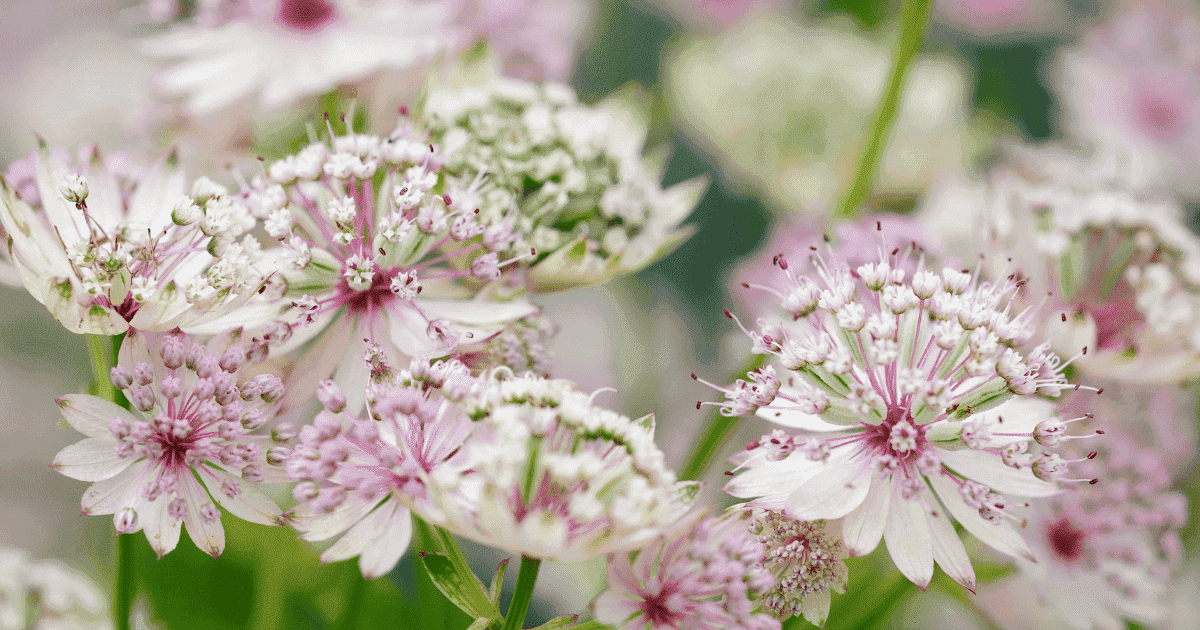
Also called Astrantias, masterwort are perennials ideal for growing in shady places and underneath trees. Masterwort thrives in moist soil. It is advisable to mulch this plant to enable it to grow well in dry soil. The bright Cherry red flower is ideal for your dark garden.
12. Helleborus

Helleborus has a single red saucer-shaped flower. It is usually white, pink, or green. Helleborus sprout in the cottage garden in shady areas during the winter; some varieties have a smoky purple single flower.
13. Cranesbill

Cranesbill, also called geranium, thrives in shades, with purple blotches around the center of the leaves and little purple flowers with a yellow center around the stem. It blooms from spring to summer. It has a distinctive variety, including Dusky Cranesbill, Géranium phaem, etc.
14. Lords and Ladies
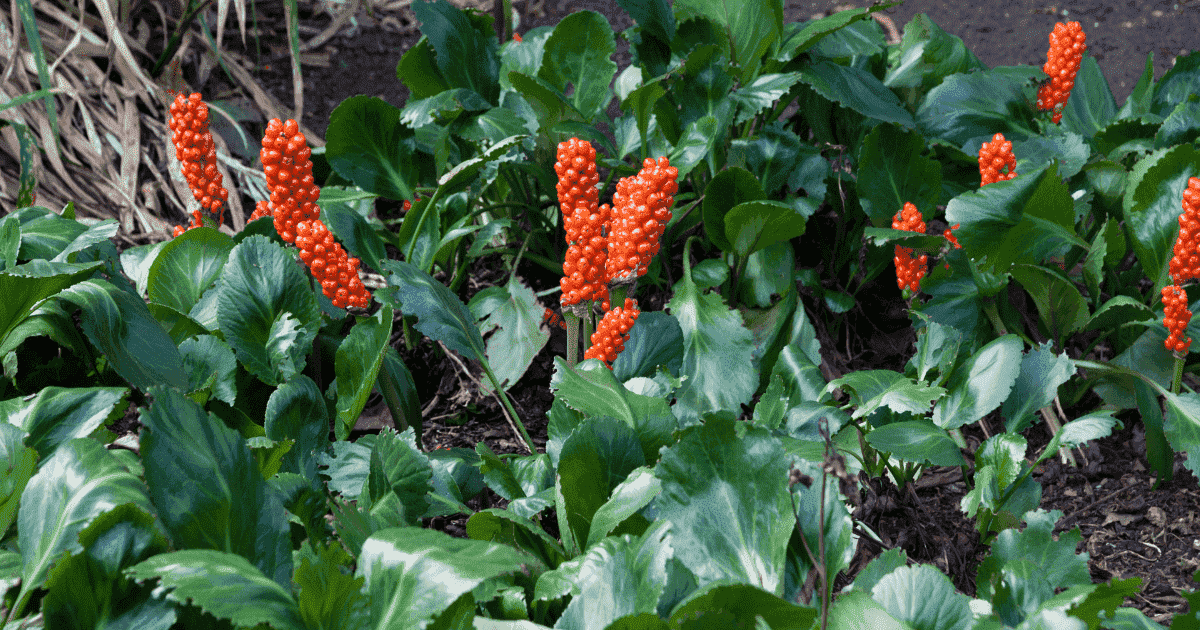
Lords and Ladies, also known as Arum Maculatum, is mostly cultivated around the woodlands. It blooms from early spring to late spring and grows under trees and shrubs around moist areas.
15. Siberian Bugloss

Siberian bugloss is also called Brunnera Macrophylla. It grows in a shady spot, mostly found in woodlands, and is great for edging paths. Siberian Bugloss has round-shaped foliage and green bloom on all the stems. It is perfect for a shady garden.
16. Lungwort
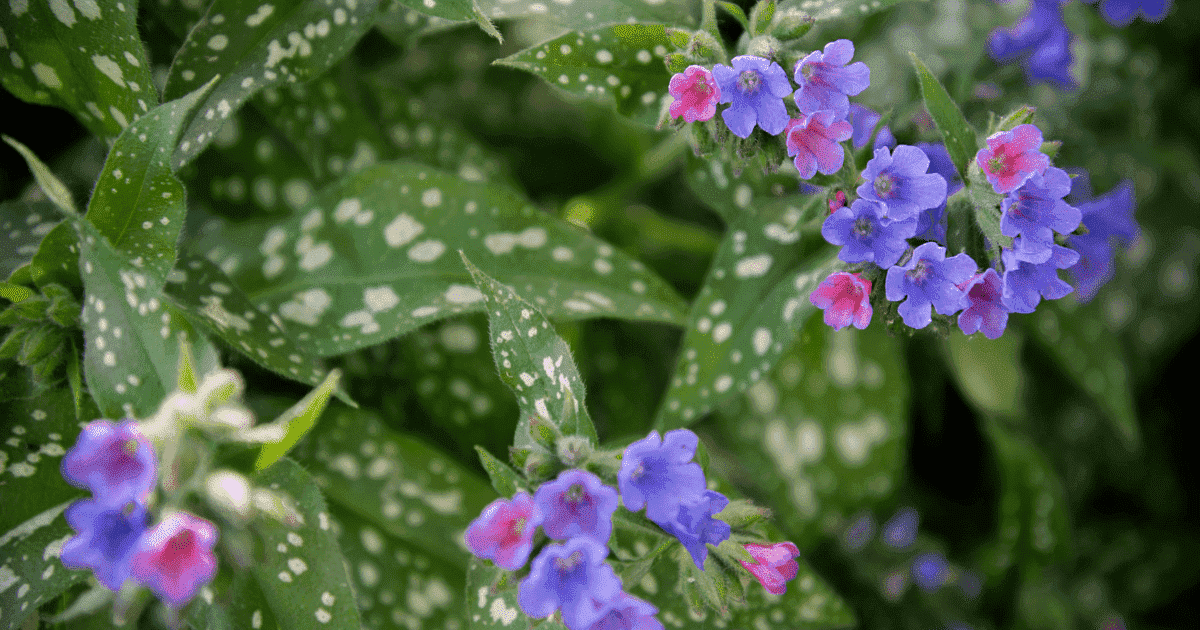
Lungwort, otherwise known as Pulmonaria, has a lung shape, as the name implies. Blooming in spring with a blue flower, it is best for ground cover plants and shady corners. Lungwort has different leaf shapes and textures. It naturally has long and curved silva leaves.
17. Bleeding Heart

The bleeding heart, also called Lamprocapnos spectabilis, blooms in late spring to early summer. It grows well in a moist shade under shrubs and trees. It blooms heart-shaped pink-red flowers with a white tip that falls from the flower stem. The bleeding heart shape makes it a unique plant.
18. Granny’s Bonnet
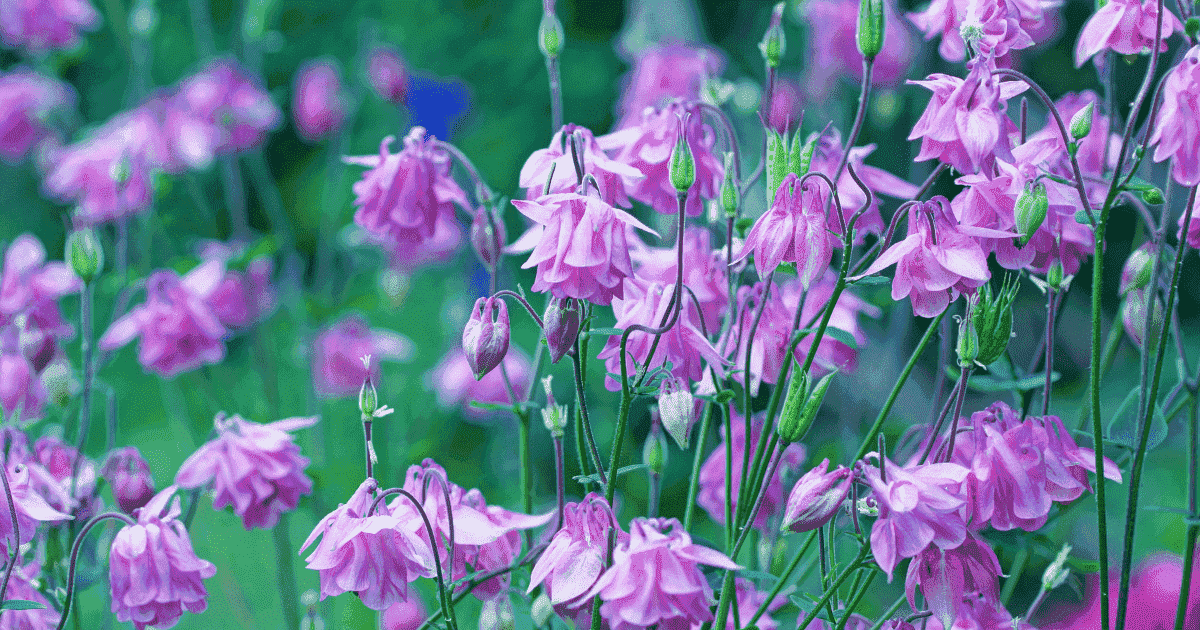
Granny’s Bonnet, also called Aquilegia, are perfect for growing in shades. The flower looks like a bonnet. Aquilegia flagellata has waxy green foliage. It has been awarded Garden Merit (AGM) from the Royal Horticultural Society
19. Foxglove

Foxglove, also called Digitalis purpurea, is mostly found in woodland and is mostly biennial. The different varieties thrive in shady and moist areas. Its flowers have different colors and different shapes.
20. Bellflower
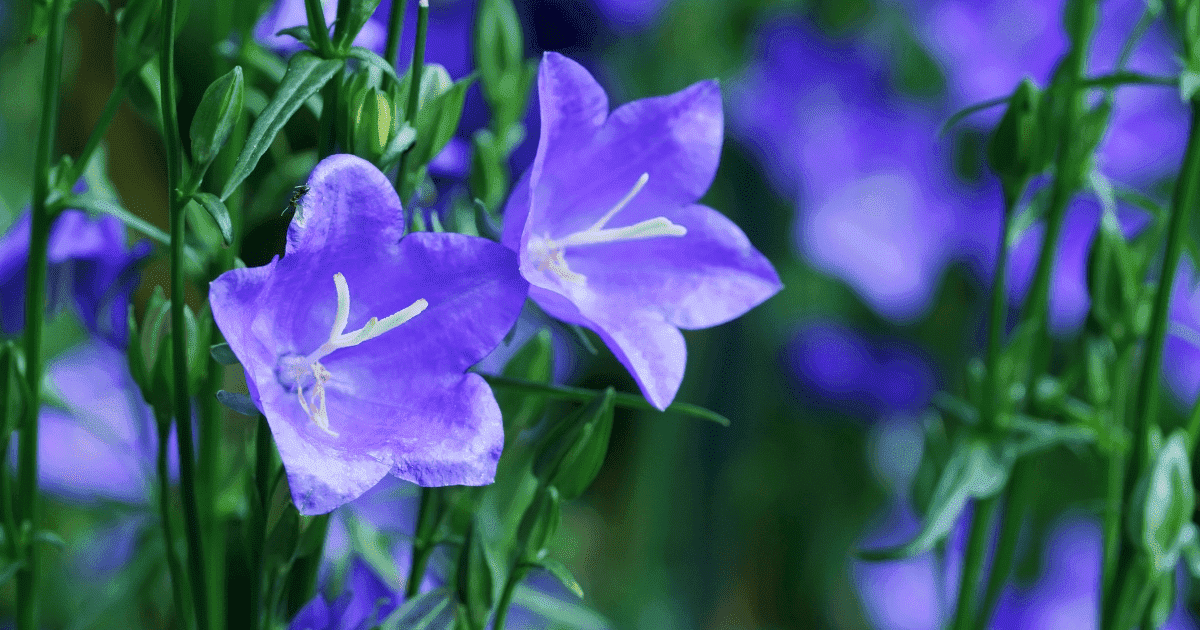
Bellflower, also called Campanula, grows well in shady areas. Also, it blooms from summer to autumn. Bellflower is good for path edging and good to cultivate in shady corners. Its flowers attract insects, mostly bees and others. It is an ideal flower for a cottage and small garden.
21. Winter Aconites
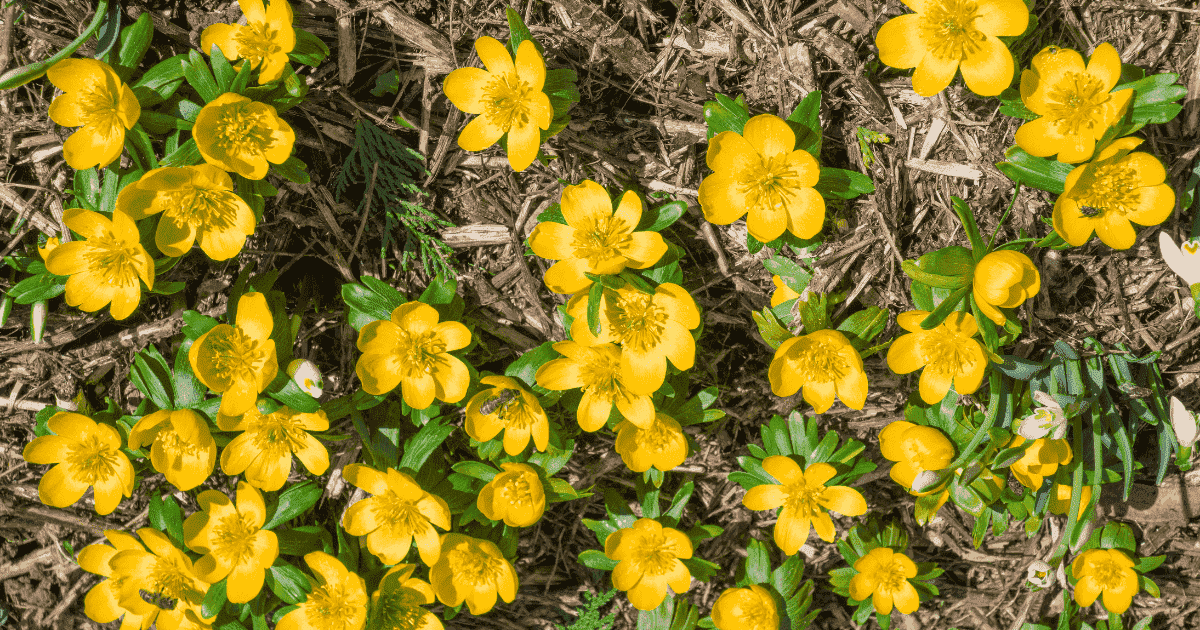
Winter Aconites, also called Era this Hyemalis, thrive in moist shade areas and are good for planting in damp, shade corners. Eranthis Hyemalis grows humps and bears yellow flowers en masse in late January. It has been awarded Garden Merit (AGM) from the Royal Horticultural Society.
22. Snowdrop
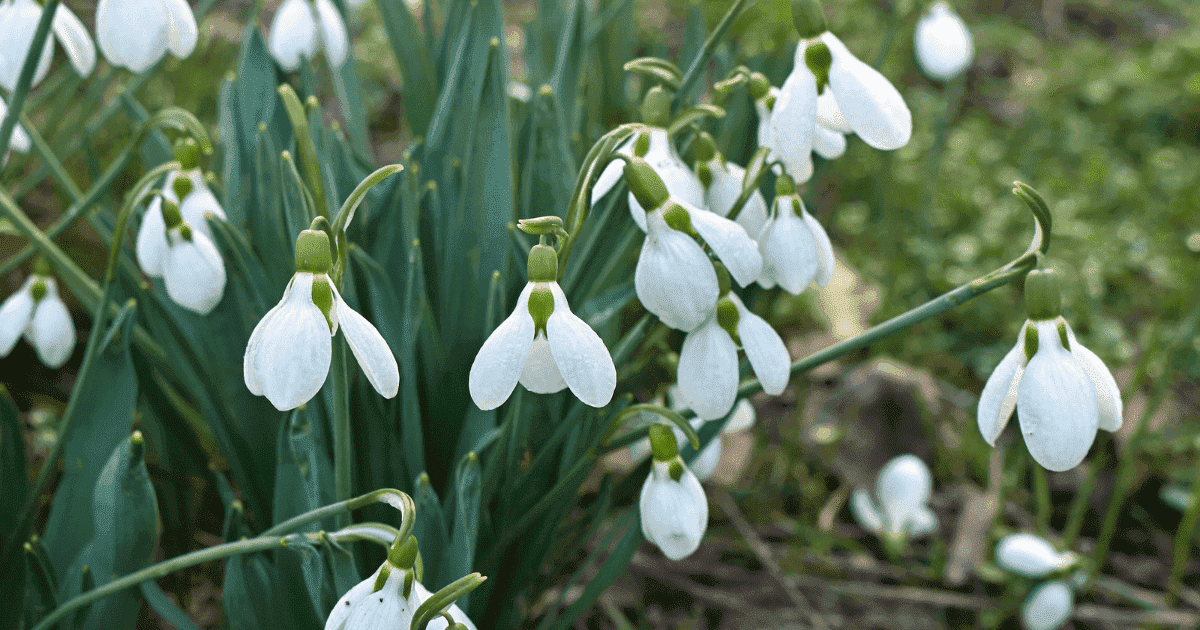
Snowdrops, also called Galanthus nivalis, thrive in moist soil during the winter. It pushes open the ice flakes to bloom for weeks. Snowdrops have been awarded Garden Merit (AGM) from the Royal Horticultural Society.
23. Wood spurge, Euphorbia Amyg-daloides Robviae
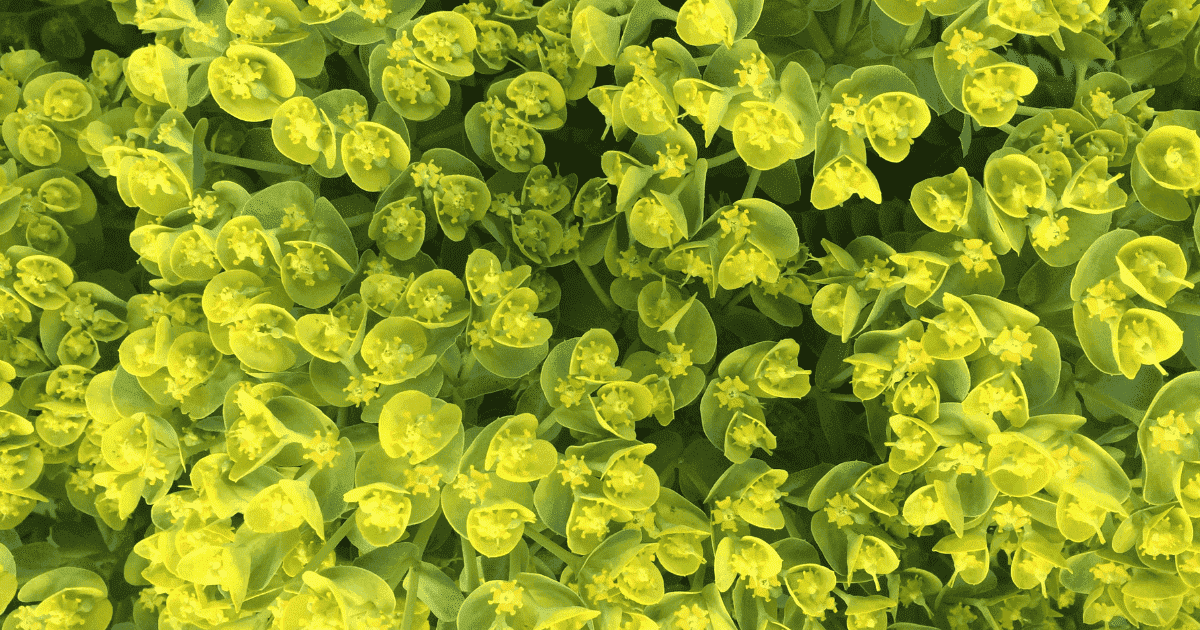
The loveliest variety is the Euphorbia Amyg-daloides Robviae. It bears green flowers in late spring. Euphorbia is perfect for dry shades, underneath trees and woodlands. It can overgrow if it is left unchecked. It has been awarded Garden Merit (AGM) from the Royal Horticultural Society.
24. Stinking Iris
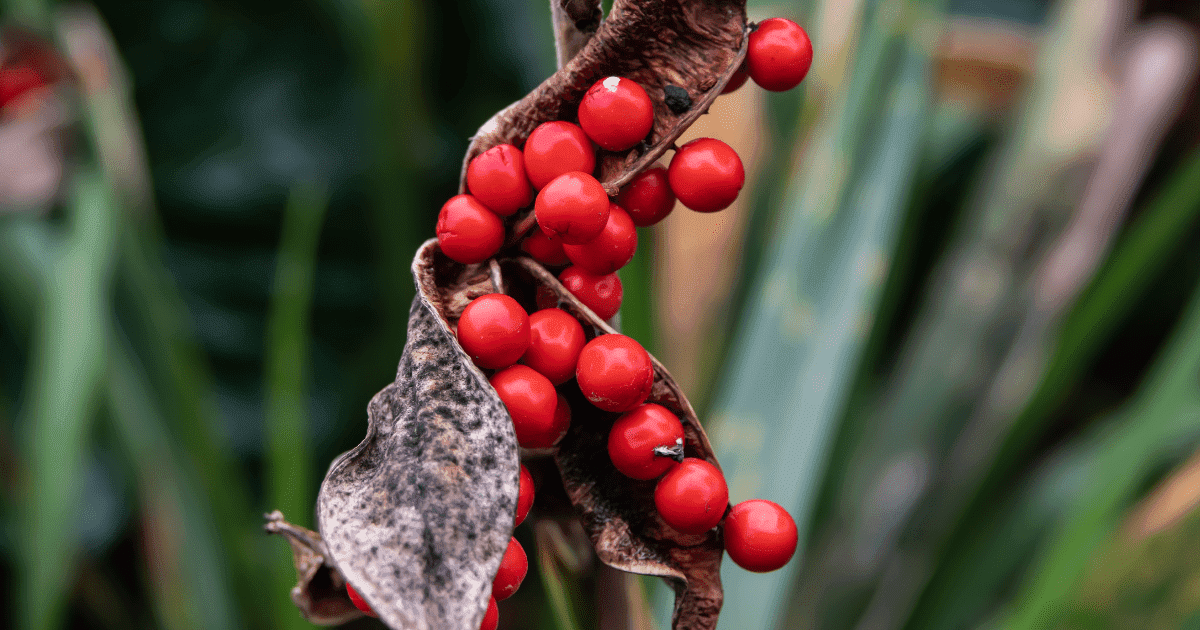
A stinking iris is an evergreen foliage also called Iris foetidissima. It bears orange-red seeds in the autumn and a purple-green flower. The seed experience explosive pollination, where the seed pod splits open to reveal its seed.
Iris thrives in complete shade, especially underneath a tree. It has been awarded Garden Merit (AGM) from the Royal Horticultural Society
25. Spiderwort
Spiderwort is also called Tradescantia or widow’s tears. Spiderwort can grow up to 2ft tall. It has yellowish-green colored leaves. Varieties include sweet kate and Concord grape. Spiderwort has a beautiful flower that can grow perfectly in a shady part of the garden.
26. Sedum Ternatum
Sedum Ternatum, also known as woodland stonecrop, grows low in damp areas or rocky soil. It blooms a beautiful flower and thrives in a shady garden sedum complementing dwarf Japanese maple and hostas.
27. Viola
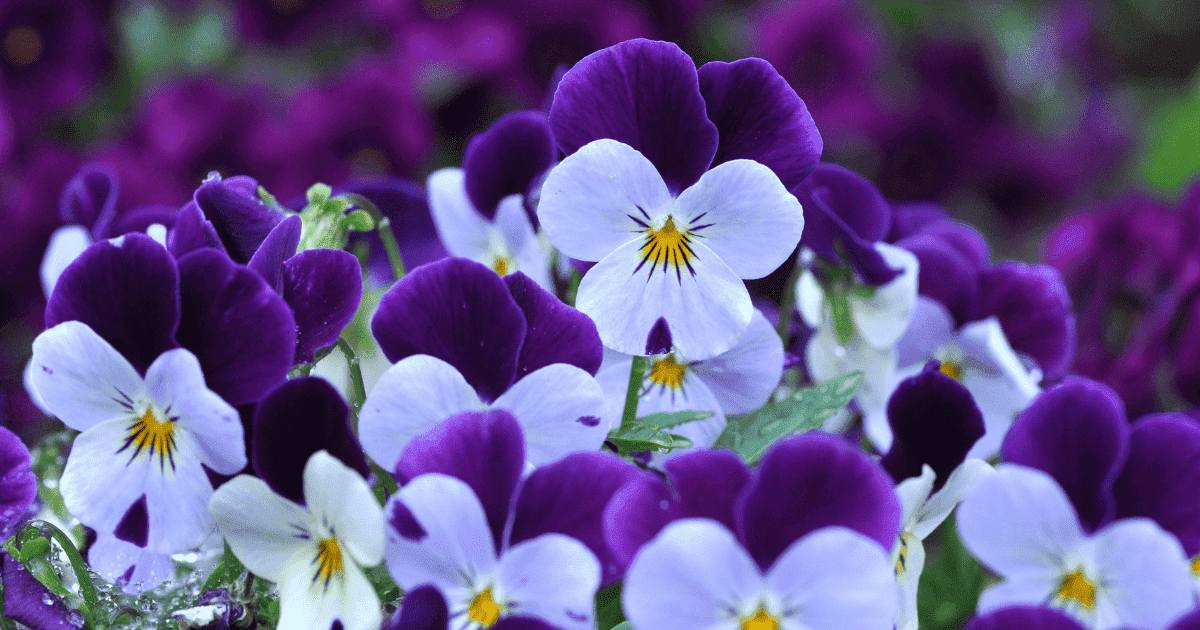
Viola is a full shade-loving plant that blooms well during the summer heat. Some varieties of viola include penny purple, johnny jump, etc. They are mostly fragrant.
28. Asarum
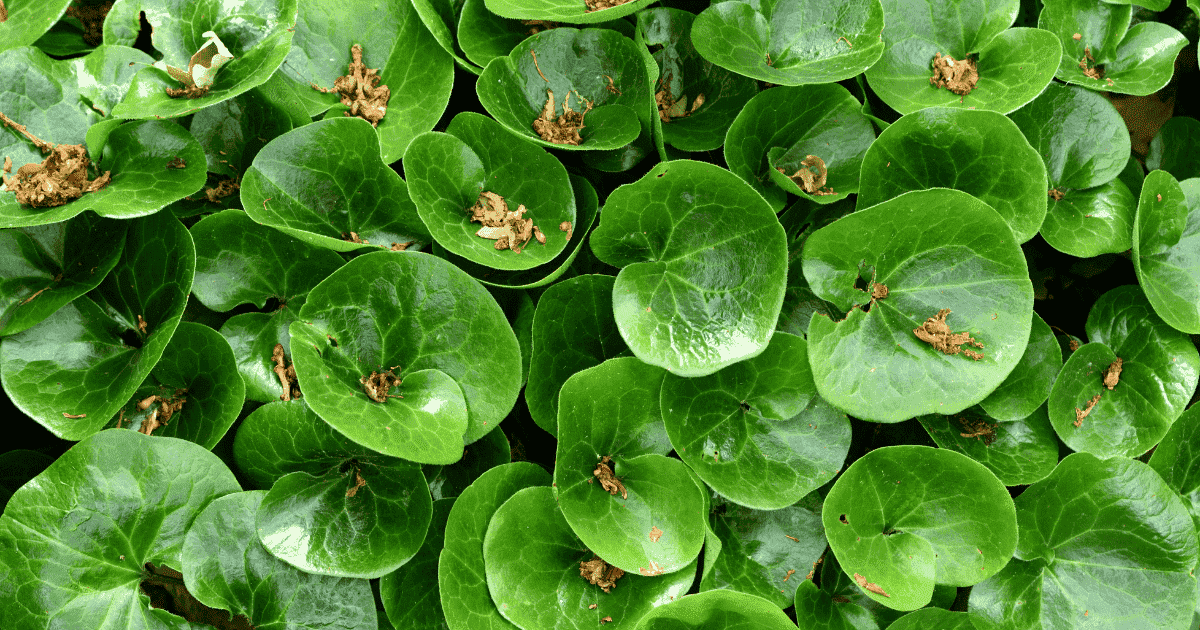
Asarum Canadense, or Canadian wild ginger, is an ideal plant for your shades. Asarum prefers moist soil. It is low-growing and does not make flowers
29. Epimedium
Epimediums are little plants, also known as fairy wings or bishop caps. They bloom in the early spring. Epimedium easily withers when stepped on. It is advisable to plant them where they are not trampled on. They have cognitive flowers which look like the bishop’s cap. Varieties include pink champagne and Loader.
30. Ferns

While listing the shade-loving plants, ferns cannot be left out. They are mostly froth-looking and have a thicker appearance. They are mostly seen in moist environments and are strong enough to withstand the dry season. Varieties of ferns include Autumn and Japanese painter.
31. Toad lily
Toad lily the name is derived from its toad shape. They bloom in the summer their bloom is usually white to lavender. Varieties include purple beauty and raspberry mousse.
32. Bletilla
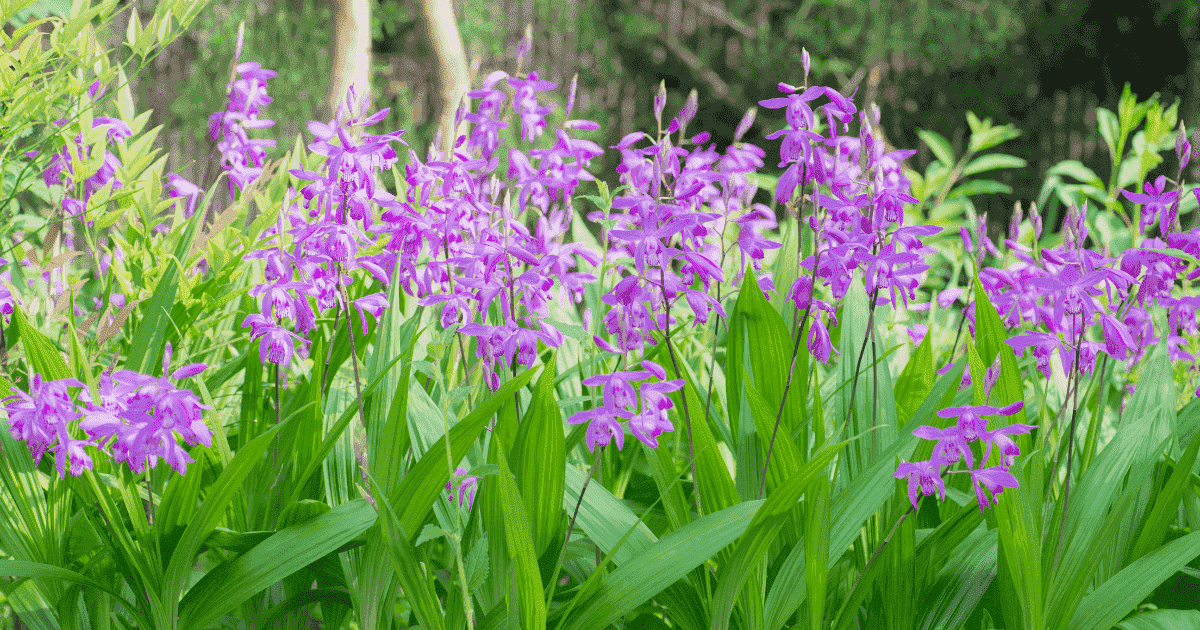
Bletilla is also called Ground orchid. It is mostly found in a warmer climate with a bloom that lasts up to six weeks with shades of pink and purple-white. It blooms in the early spring and is very pleasant to look at. Bletilla can be cultivated indoors with containers. It is a Chinese low-maintenance ground orchid with the requirement of shad. The varieties of betillas include white pearl and kate.
33. Trillium
Trillium has a triangle shape. The three leaves below the bloom give trillium its name. It can be cultivated in wet soil and dark shade. Varieties include white and red.
34. Caladium
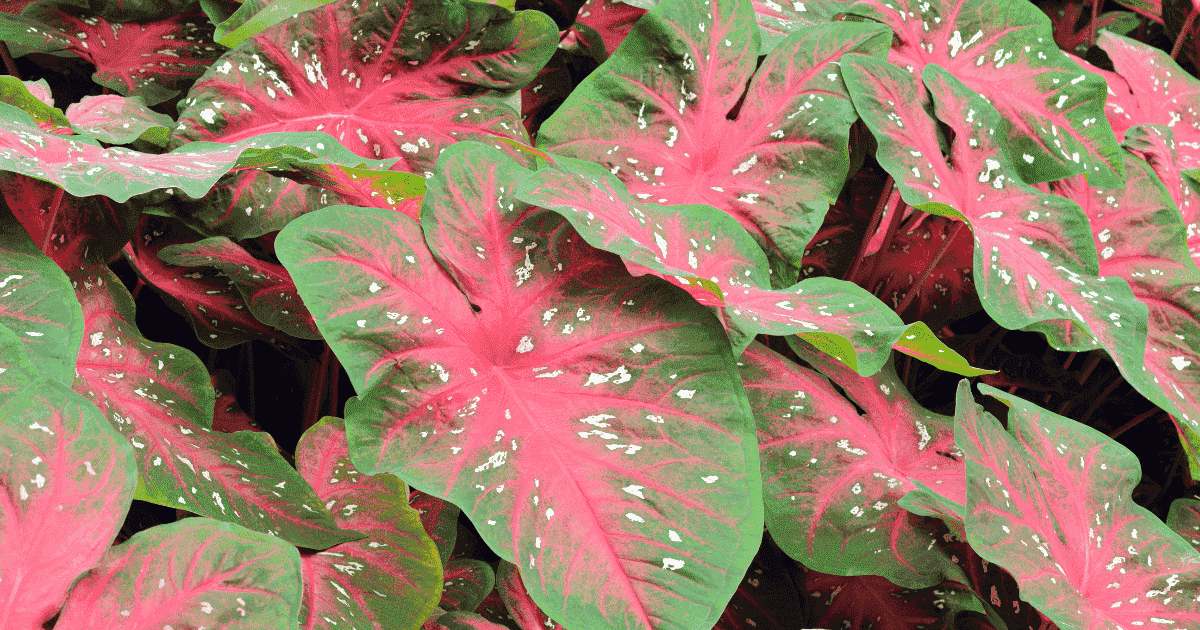
Caladium has large heart-shaped leaves with different showy colors. It is mainly found in cold climates. And can be cultivated indoors in a pot over the winter. Varieties include Red flash and White Christmas.
35. Hydrangea
Hydrangea enjoys the morning sun but ultimately languishes better in the shade. Hydrangea does not thrive for a long time in sweaty summer afternoons.
The variety of the climbing Hydrangea, also known as Hydrangea Animal, adds visual interest to walls and fences. It is mainly found in Asia. Climbing Hydrangea does not use a trellis, an organ utilized for climbing in some plants, but it uses suckers on its branches for maneuvering over walls and trees. Hydrangea grows slowly. But it can reach a height of 50ft in maturity.
36. Creeping Jenny

Creeping Jenny observes a color change in a shady spot. Whereas in hot areas, they must be protected from direct sun contact. They can also thrive in a partial shade, depending on the variety.
37. Impatiens
The cultivation of Impatiens is popular mostly in partial shade but can be cultivated in a completely dark shade. Impatiens are preferably used as surface cover due to their bright color and strong blooms. They grow up to 36 inches tall and 3 ft wide. They prefer well-drained soil.
Impatiens bloom in spring and summer with bright red, pink, and violet colors, etc. They are both perennial and annual plants and can be located in the northern United States and other areas with the same climate.
38. Lily of the valley

Lily of the valley’s survival depends on the soil texture; they can survive in full shade, partial shade, or full sunlight. It is the most adaptable and the most fragrant of summer flowers.
39. Hakonechloa
Sunlight causes burns and marks to Hakonechloa, causing the leaves to turn yellow. Therefore, the most suitable place to cultivate it is in the shade. Even though it is grass, it prefers shades to the sun. It has a cascading habit and grows only 12-15 inches.
40. Leopard Plants
The best place is this plant’s partial shade, even though it tends to tolerate sunlight. It is also possible to not water it because it may lead to a water spot.
41. Spotted Dead Nettles

Spotted dead nettle, also called Lamium, grows en masse and aggressively with little or no light in the garden. It has graceful purple flowers. is widely used as a cover for shade.
Spotted Nettles are mostly evergreen. Depending on the growing condition in some regions, they may be herbaceous plants. It is a perfect plant for a dry shady area. Lamium blooms in spring and summer. Varieties include Beacon Silver and Herman’s Price.
43. Jacob’s Ladder
Jacob’s ladder, as the name implies, has the shape of a ladder and can survive in the sun and in shades. When it is planted in shades and dry soil, it looks darker and stronger.
44. Wax begonias
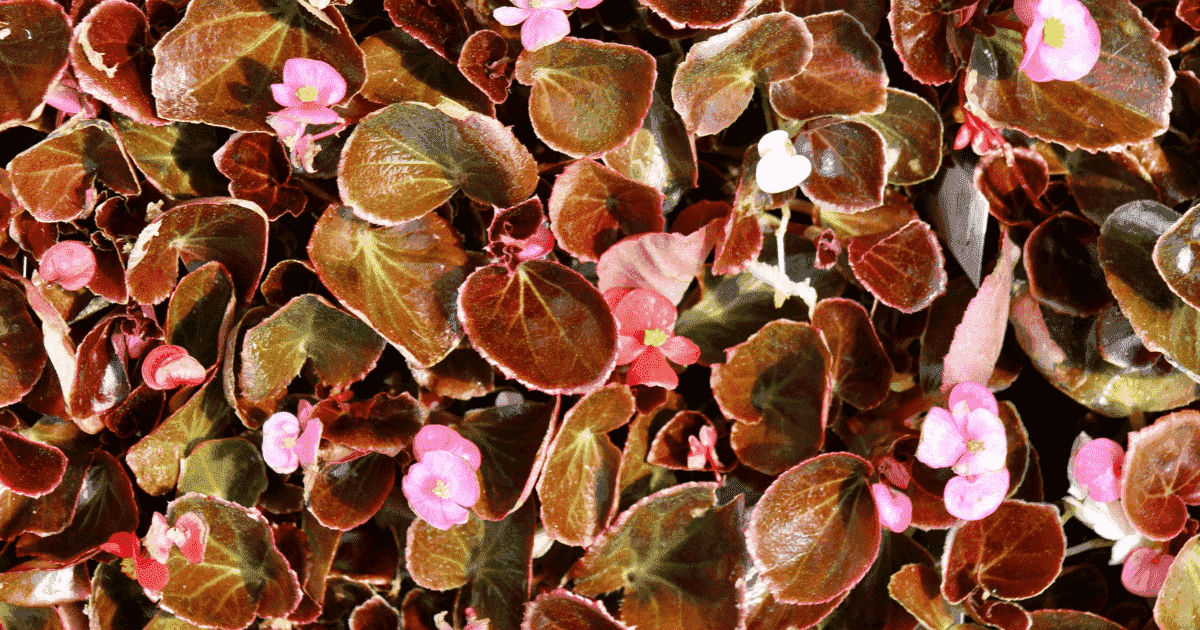
Wax Begonias, also known as Begonia semperflorens, is a little plant that grows 6-18″ high and 6-12″ wide. It has either maroon, glossy or wax-looking leaves, just as the name implies. Their flower can range from white to red. Begonia has gorgeous flowers and is very low maintenance. They need occasional pruning. Varieties include spruce and Adrienne Legault.
The requirements of the Begonia depend on your climate and soil texture. It may require partial or full shade in a high-temperature climate, as sunlight can cause burns and stress.
45. Yew
Yew genus, also known as Taxus app, grows in zones 4- 7. Taxus produces red berries and has a strong relationship with Christianity. It is widely used during Christmas for decoration and is also found in churchyards.
Taxus are easy to care for, and they can tolerate difficult growing conditions. They are highly adaptable to the landscape and environment. It produces cones instead of flowers, and the width and size vary from different species.
46. Calendula
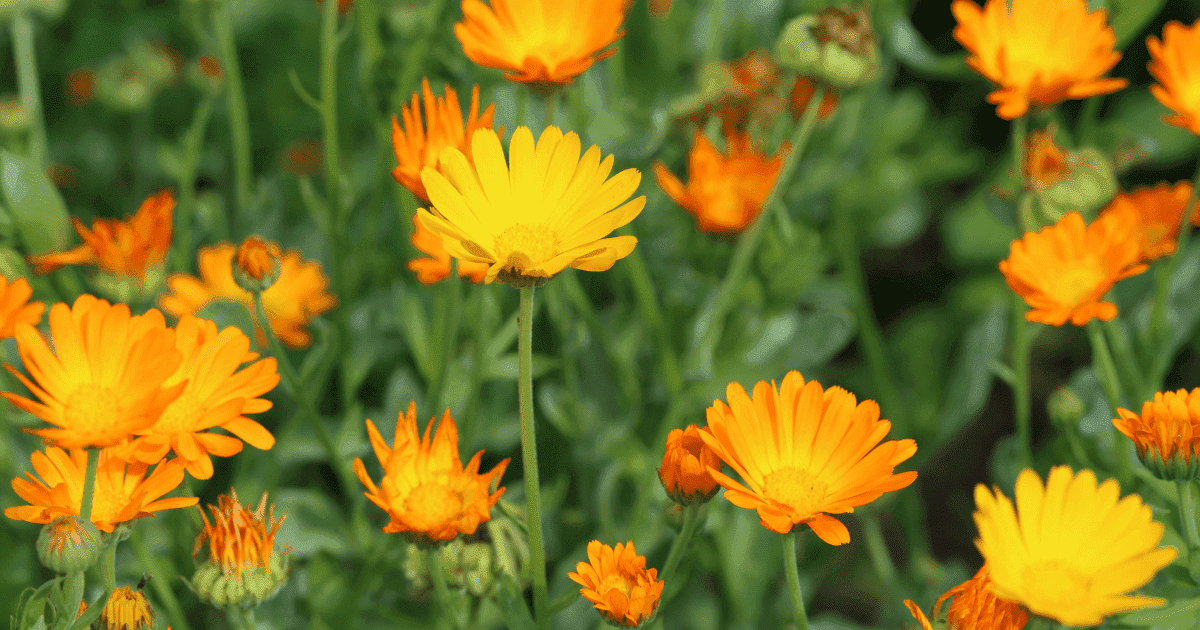
Calendula genus, also called Marigold, is both an annual and perennial plant. They are mostly found around southwestern Asia and Europe. Calendula can grow and flourish in shades.
47. Primula
Primula, also called primrose, is easy to grow. Primrose needs shade and water. They grow well in shade and moist soil. The varieties cover 425 different species with different color ranges. Primroses are shade tolerant.
48. Euphorbia
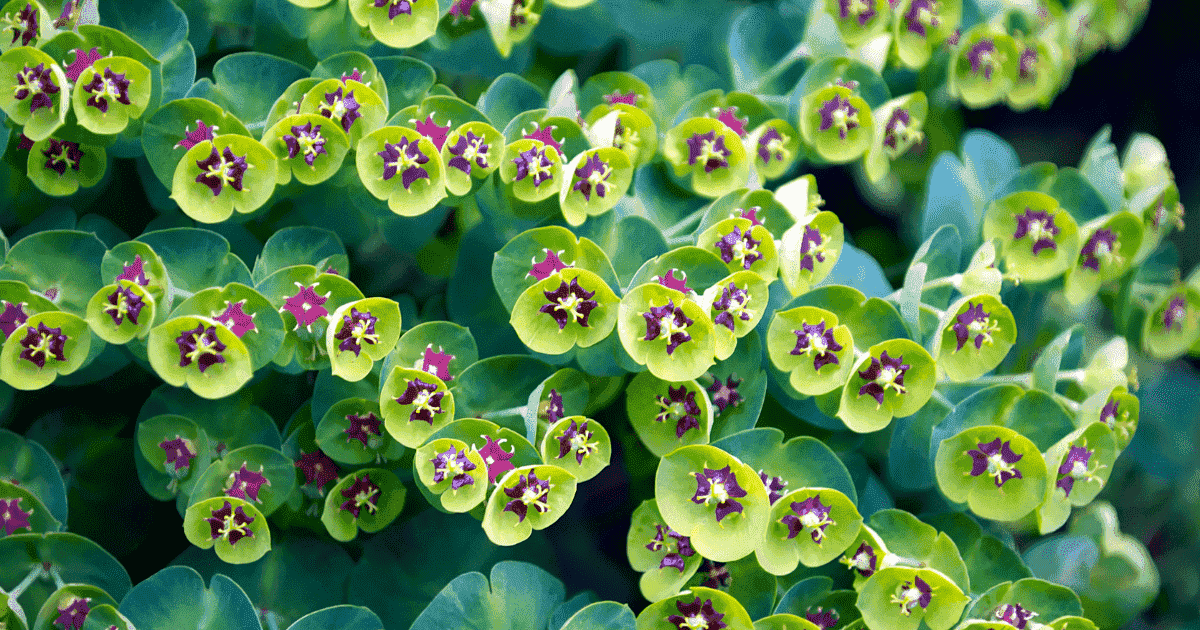
Euphorbia, also known as surge, has a reddish yellow color, and the fruit can be served as an appreciation to visitors. The variety Euphorbia polychroma also called ‘Bonfire,’ has a dome of yellow that usually appears in late spring. The variety has three different colors for different seasons. Some variety, like Jessie grows on trees.
49. Alchemilla
Alchemilla, also known as Lady’s mantle, forms water drops into delicate jewelry beads. It blooms from June. These low-growing flower plants have yellow-green flowers and suitable fillers for bouquets of a large color range.
50. Fuchsias

Fuchsias is an Annual brightly colored plant with either single or double flowers. They have a trailing stem. They thrive in shady environments where most plants cannot survive.
Fuchsias are very sensitive to cold. It has to be cultivated in a temperature above 50 degrees Fahrenheit. Fuchsias can grow up to 2ft in a year. They attract beautiful birds like hummingbirds. Varieties of Fuchsias include the Spruce and Kara Riley
